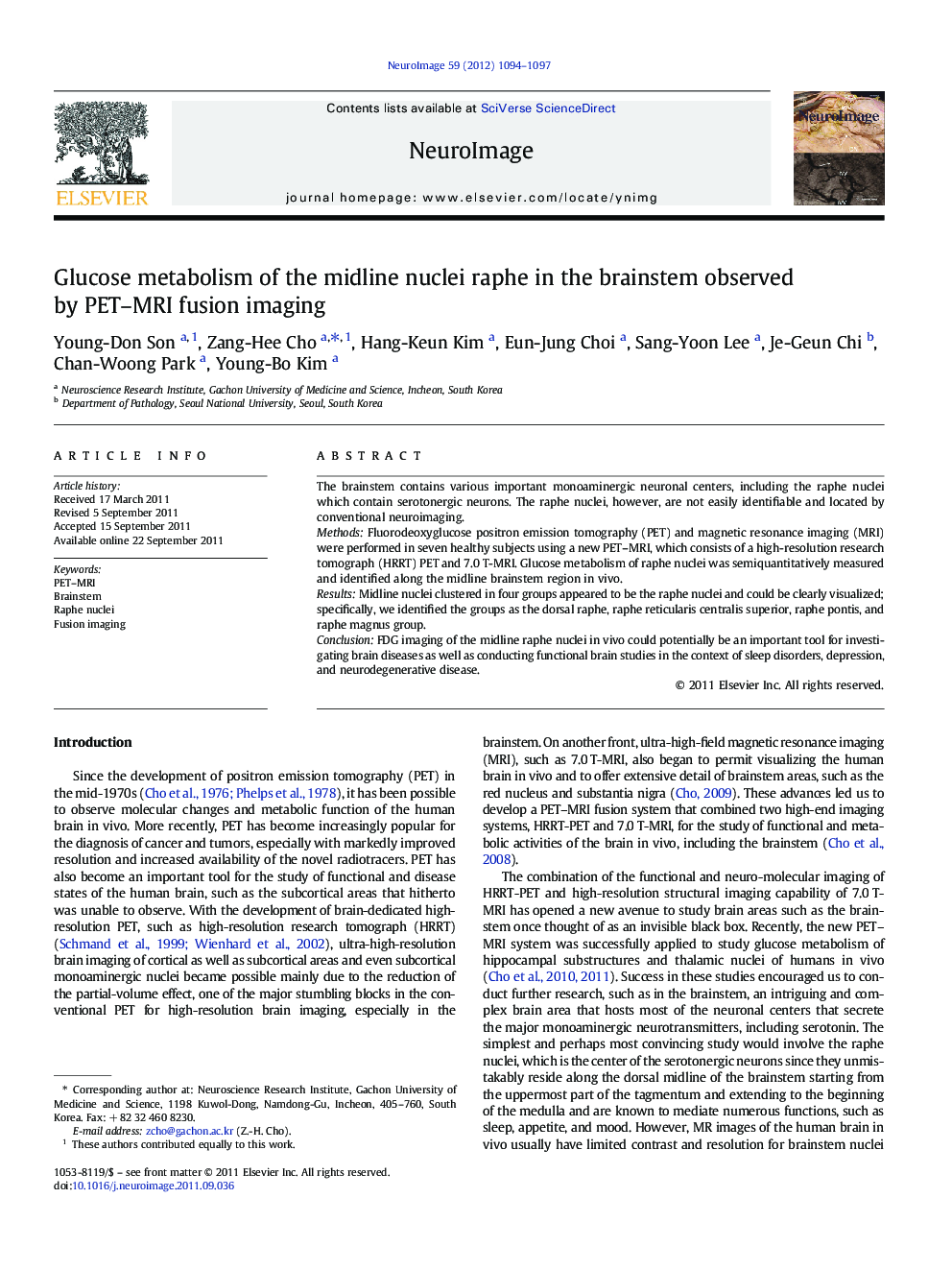| Article ID | Journal | Published Year | Pages | File Type |
|---|---|---|---|---|
| 6033165 | NeuroImage | 2012 | 4 Pages |
The brainstem contains various important monoaminergic neuronal centers, including the raphe nuclei which contain serotonergic neurons. The raphe nuclei, however, are not easily identifiable and located by conventional neuroimaging.MethodsFluorodeoxyglucose positron emission tomography (PET) and magnetic resonance imaging (MRI) were performed in seven healthy subjects using a new PET-MRI, which consists of a high-resolution research tomograph (HRRT) PET and 7.0Â T-MRI. Glucose metabolism of raphe nuclei was semiquantitatively measured and identified along the midline brainstem region in vivo.ResultsMidline nuclei clustered in four groups appeared to be the raphe nuclei and could be clearly visualized; specifically, we identified the groups as the dorsal raphe, raphe reticularis centralis superior, raphe pontis, and raphe magnus group.ConclusionFDG imaging of the midline raphe nuclei in vivo could potentially be an important tool for investigating brain diseases as well as conducting functional brain studies in the context of sleep disorders, depression, and neurodegenerative disease.
⺠The brainstem was imaged using high-resolution PET-MRI fusion system. ⺠Midline raphe-like nuclei were measured by FDG PET image. ⺠Anatomical landmarks provided by MRI helped identification of the nuclei. ⺠Finding of the raphe can be useful for studying serotoninergic function.
